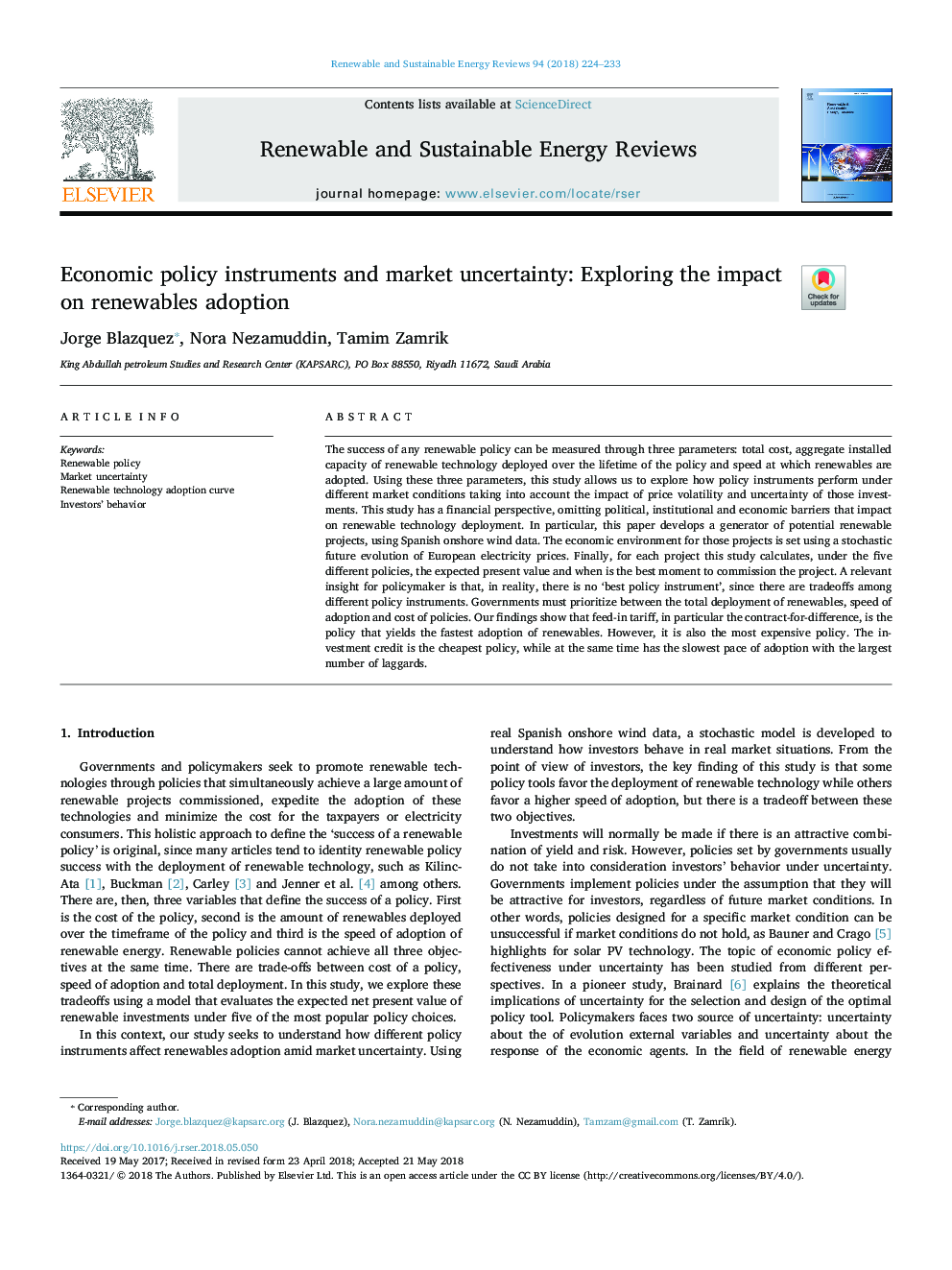| Article ID | Journal | Published Year | Pages | File Type |
|---|---|---|---|---|
| 8110400 | Renewable and Sustainable Energy Reviews | 2018 | 10 Pages |
Abstract
The success of any renewable policy can be measured through three parameters: total cost, aggregate installed capacity of renewable technology deployed over the lifetime of the policy and speed at which renewables are adopted. Using these three parameters, this study allows us to explore how policy instruments perform under different market conditions taking into account the impact of price volatility and uncertainty of those investments. This study has a financial perspective, omitting political, institutional and economic barriers that impact on renewable technology deployment. In particular, this paper develops a generator of potential renewable projects, using Spanish onshore wind data. The economic environment for those projects is set using a stochastic future evolution of European electricity prices. Finally, for each project this study calculates, under the five different policies, the expected present value and when is the best moment to commission the project. A relevant insight for policymaker is that, in reality, there is no 'best policy instrument', since there are tradeoffs among different policy instruments. Governments must prioritize between the total deployment of renewables, speed of adoption and cost of policies. Our findings show that feed-in tariff, in particular the contract-for-difference, is the policy that yields the fastest adoption of renewables. However, it is also the most expensive policy. The investment credit is the cheapest policy, while at the same time has the slowest pace of adoption with the largest number of laggards.
Keywords
Related Topics
Physical Sciences and Engineering
Energy
Renewable Energy, Sustainability and the Environment
Authors
Jorge Blazquez, Nora Nezamuddin, Tamim Zamrik,
